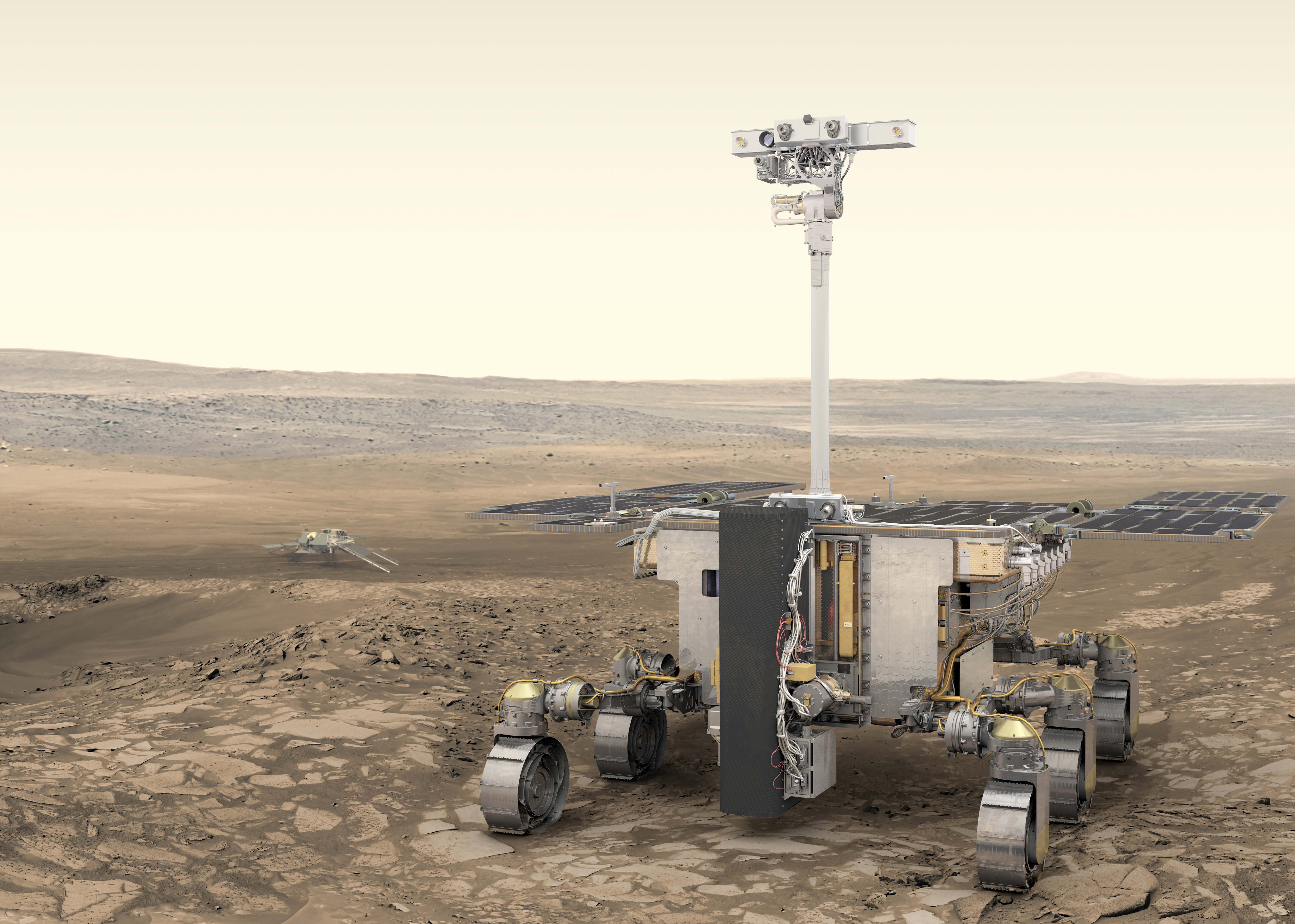Europe to ask for homegrown lander for troubled ExoMars rover
Russia was supposed to provide the landing platform, but it's no longer part of the ExoMars program.

The science goals set for Europe's beleaguered ExoMars rover are still unique, European Space Agency (ESA) officials said, as they laid down plans to ask member states to fund a new homegrown descent module.
The European ExoMars rover, named Rosalind Franklin, had been slated to launch to the Red Planet atop a Russian Proton rocket from Baikonur Cosmodrome in September. The rover, designed to search for traces of Martian life with a 6.6-foot-long (2 meters) subsurface drill, was to be carried to the surface inside a Russia-built entry and descent module. After years of delays, things were finally on track for a launch this year — until Russia's invasion of Ukraine put a political end to the partnership.
But ESA, which has worked on ExoMars since 2004, couldn't justify abandoning the flagship mission, which has absorbed the careers of a generation of scientists. At a recent news conference, ESA's director of human and robotic exploration, David Parker, confirmed plans to order a brand-new Europe-made entry and descent module for the rover, with the goal to launch to Mars in 2028. In 2030, the rover could touch down in Oxia Planum, an ancient clay-rich basin near Mars' northern tropics, which was chosen for its past presence of water and abundance of sediments that could harbor precious biomarkers.
Related: Europe's troubled Mars rover still vital in the search for life on the Red Planet
According to the BBC, ESA will request 360 million euros to kickstart work on the new landing system, with additional funds likely needed in subsequent years. ESA has already spent some 1.3 billion euro on the ExoMars program, which also includes an orbiter that has been studying Mars' atmosphere and surface since 2017. ESA will put the plan in front of delegates of its 22 member states at a ministerial conference in November.
"We will have to wait if the [member states] decide to go forward with the project," Parker said. "This concept is now proposed as part of the director general's package within [ESA's] exploration program for decision at the ministerial [conference]."
The European science community fully backs the plan, ESA's director general Josef Aschbacher said in the news conference, as no other current or planned Mars mission has the capability to retrieve samples from so deep underground. In those hidden soil layers, chances are highest for the survival of organic compounds related to past microbial life.
Breaking space news, the latest updates on rocket launches, skywatching events and more!
"It is still the most advanced and interesting science in the search of life on Mars," Aschbacher said. "[The ExoMars rover] will be the only instrument with a drill that goes down up to 2 meters into the surface that would have this capability of searching for microbial life on Mars. There is no other similar mission planned."
Scientists believe that, up until about 3.7 billion years ago, Mars looked quite like Earth, with abundant liquid water flowing on its surface. The conditions on both planets were so similar that scientists believe simple microbial life forms could have come to exist on Mars at about the same time as they did on Earth. Then, however, the evolutionary paths of the two planets diverged. Mars lost its global magnetic field, which led to the stripping away of most of its atmosphere, which had both kept the planet warm and shielded its surface from harsh, sterilizing solar radiation. Mars became the arid, inhospitable word we see today.
Since the Martian surface today is bathed in ultraviolet light, scientists believe that searching for traces of past life deep underground promises a higher chance of success. NASA's rovers Curiosity and Perseverance are fitted with drills, but these are much shorter and only able to explore the first few inches of Martian rock.
Follow Tereza Pultarova on Twitter @TerezaPultarova. Follow us on Twitter @Spacedotcom and on Facebook.

Tereza is a London-based science and technology journalist, aspiring fiction writer and amateur gymnast. Originally from Prague, the Czech Republic, she spent the first seven years of her career working as a reporter, script-writer and presenter for various TV programmes of the Czech Public Service Television. She later took a career break to pursue further education and added a Master's in Science from the International Space University, France, to her Bachelor's in Journalism and Master's in Cultural Anthropology from Prague's Charles University. She worked as a reporter at the Engineering and Technology magazine, freelanced for a range of publications including Live Science, Space.com, Professional Engineering, Via Satellite and Space News and served as a maternity cover science editor at the European Space Agency.
